Your Guide to Bartending for Newbies in Australia
Bartending isn’t just about mixing drinks and pouring beer; it’s an art form, a science, and a customer service job all rolled into one. As a bartender, you craft experiences, manage a dynamic environment, and become an expert in a wide range of drink recipes. Let’s explore what it means to begin a journey and what it means with bartending for newbies in Australia.
The Role of a Bartender
An adept bartender possesses a unique combination of skills: part social butterfly, part mixologist, and always on your toes. The best bartenders not only know their drinks but also know how to make every patron feel welcome. While mixing a perfect martini is essential, remembering a guest’s name or their favorite cocktail can make a world of difference. Bartending is not just a job; it’s a career that requires dedication, passion, and a personal touch.
Setting Up Your Workspace: Essentials of a Bartender’s Kit
If you’re just getting started and wanting to learn bartending for newbies, setting up your workspace efficiently is crucial. Think of your bar area as a chef would their kitchen; every tool must have its place, ready to be used at a moment’s notice. Here are the core elements that will make up your bartender’s kit.
Tools of the Trade
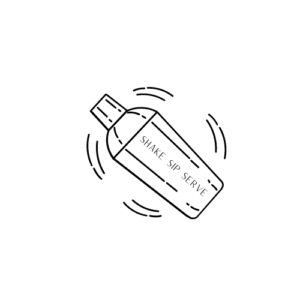 Shaker A crucial tool for mixing cocktails.
Shaker A crucial tool for mixing cocktails.
Use: Used to combine ingredients, chill the mixture, and create a well-blended drink. There are two main types: the Boston shaker (a two-piece set with a mixing tin and a pint glass) and the cobbler shaker (a three-piece set with a built-in strainer).
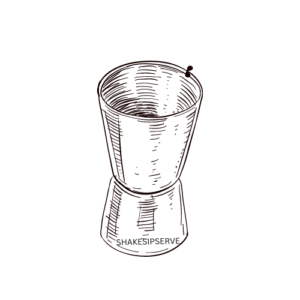 Jigger A measuring tool used for pouring accurate amounts of liquid.
Jigger A measuring tool used for pouring accurate amounts of liquid.
Use: Ensures consistency in cocktails by allowing precise measurements. Typically, jiggers have two sides with different measurements, such as 1 oz and 1/2 oz.
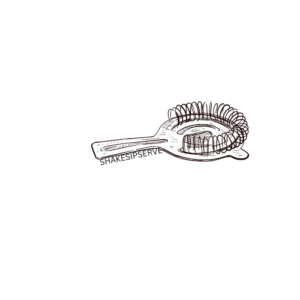 Strainer Used to separate solids from liquids.
Strainer Used to separate solids from liquids.
Use: When pouring a cocktail from a shaker, a strainer keeps ice and other solids (like muddled fruit or herbs) from entering the final drink. Common types include the Hawthorne strainer and the fine mesh strainer.
Bar Spoon A long, slender spoon with a twisted handle.
Use: Ideal for stirring cocktails in a mixing glass, layering drinks, and scooping garnishes. The twisted handle aids in mixing without aerating the drink too much.
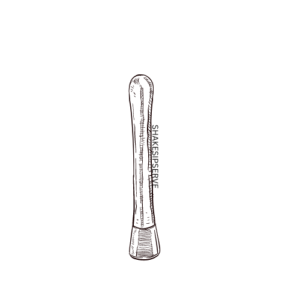 Muddler A tool used to crush or mash ingredients.
Muddler A tool used to crush or mash ingredients.
Use: Essential for releasing the flavors of fresh ingredients like mint leaves, fruits, and sugar cubes in cocktails such as mojitos and old fashioneds.
Pour Spouts Small devices attached to the tops of liquor bottles.
Use: Provide a controlled and consistent pour, making it easier to measure and pour spirits accurately and efficiently.
 Mixing Glass A sturdy glass container used for stirring cocktails.
Mixing Glass A sturdy glass container used for stirring cocktails.
Use: Used to mix ingredients for cocktails that are stirred rather than shaken, such as martinis and manhattans.
Ice Scoop A scoop specifically designed for handling ice.
Use: Ensures sanitary handling of ice cubes and helps in filling glasses or shakers with ice without using bare hands.
Wine Key (Corkscrew) A multi-functional tool for opening wine bottles.
Use: Essential for bartenders to open wine bottles efficiently. Typically includes a knife for cutting foil, a screw for pulling the cork, and a bottle opener.
Bottle Opener A tool designed to remove caps from bottles.
Use: Essential for opening beer bottles and other beverages sealed with a cap.
 Citrus Juicer A device for extracting juice from citrus fruits.
Citrus Juicer A device for extracting juice from citrus fruits.
Use: Used to freshly squeeze lemon, lime, and other citrus juices for cocktails. Provides better flavor than pre-bottled juice.
Peeler A small tool used to peel fruits and vegetables.
Use: Ideal for creating citrus twists and garnishes to add visual appeal and flavor to cocktails.
Zester A tool with small, sharp holes used to remove zest from citrus fruits.
Use: Extracts thin strips of zest from citrus fruits, which can be used to garnish drinks and add a burst of citrus aroma and flavor.
Fine Mesh Strainer A fine sieve used to strain liquids.
Use: Often used in conjunction with a regular strainer to catch smaller particles and create a smoother drink. Essential for drinks like the espresso martini or any cocktail that benefits from a clean finish.
Tongs Small, pinching tools for handling items.
Use: Used to handle ice, fruit, and other garnishes hygienically without touching them directly.
Speed Pourer A spout attachment for liquor bottles designed to control the flow of liquid.
Use: Ensures a consistent and controlled pour rate, which is crucial for accuracy and speed in a busy bar environment.
Cutting Board and Knife Basic kitchen tools for cutting and preparing ingredients.
Use: Essential for slicing fruits, herbs, and other garnishes needed for cocktails.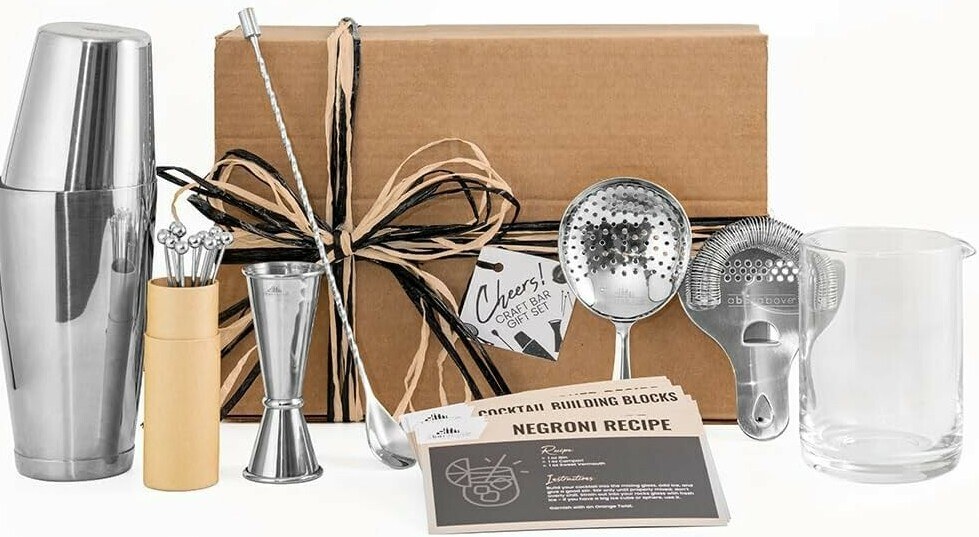
Having these tools at your disposal will not only streamline your bartending process but also ensure you can craft high-quality drinks efficiently and consistently.
Glassware
If you are wanting to get one things right when learning bartending for newbies it is that you learn your glasswear.
The right glass not only presents the drink properly but also enhances the drinking experience. The perfect drink deserves the perfect vessel, and a well-stocked bar boasts a variety of glassware designed to enhance the taste and presentation of your beverages. Here’s a breakdown of some essential bar glasses and their functionalities:
- Coupette Glass: This elegant, wide-mouthed glass with a short stem is ideal for classic cocktails like the Sidecar or the Margarita. The wide bowl allows for proper appreciation of the drink’s color and aroma.
- Martini Glass: The iconic V-shaped martini glass is perfect for showcasing layered cocktails like the Cosmopolitan or a classic Martini. The narrow rim helps concentrate the aromas and deliver the drink to the tip of the tongue for a chilled and sophisticated experience.
- Rocks Glass (Old Fashioned Glass): This sturdy, short glass with a thick base is perfect for serving drinks “on the rocks” – with ice. The Old Fashioned, Manhattan, and Whisky on the Rocks are all right at home in a rocks glass. The thick base helps retain the drink’s temperature and prevents dilution from melting ice.
- Highball Glass: This tall and slender glass is ideal for taller cocktails with a larger volume of liquid, often mixed with soda or ginger ale. The Highball, Cuba Libre, and Moscow Mule are all perfectly suited for a highball glass. The tall design allows for a good balance of ice and beverage, preventing overflow while ensuring a refreshing drink.
- Lowball Glass (Double Old Fashioned Glass): Similar to the rocks glass but wider and slightly larger, the lowball glass is perfect for serving larger whiskey pours or cocktails with more ingredients. The Old Fashioned (sometimes served in a lowball), White Russian, and Black Russian are all commonly served in lowball glasses.
- Shot Glass: This small, straight-sided glass is designed for, you guessed it, shots! Tequila, vodka, or any spirit meant to be enjoyed in a single gulp can be served in a shot glass.
- Flute Glass: This tall, slender glass with a narrow rim is specifically designed for Champagne and sparkling wines. The narrow opening helps retain the bubbles and allows for a graceful presentation and appreciation of the effervescent beverage.
- Wine Glasses: For the wine connoisseurs, there are various wine glasses designed to enhance the specific characteristics of red, white, and sparkling wines. Red wine glasses tend to be larger with a wider bowl, while white wine glasses are typically smaller and more U-shaped.
- Pint Glass: A staple in many bars, the pint glass is perfect for serving beer. The straight sides and sturdy build allow for a good head of foam and comfortable handling.
- Mason Jar: This versatile glass jar has become increasingly popular in bars. It can be used for creative cocktails, infused drinks, or even non-alcoholic beverages.
Remember, this is just a starting point! The world of bar glassware is vast and exciting. As you explore your mixology journey, you may encounter other specialized glasses designed for specific cocktails or presentations.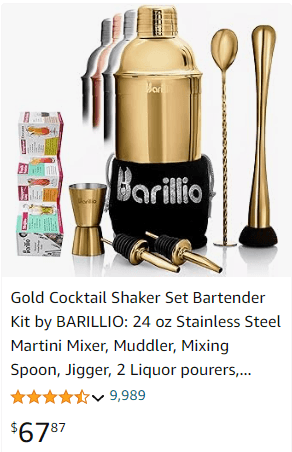
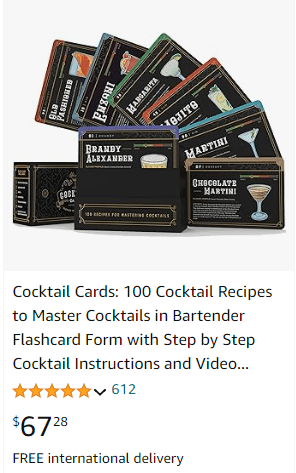
Liquors and Mixers
Stock your bar with staple spirits like vodka, gin, rum, whiskey, and tequila. Add a variety of mixers such as vermouth, soda, tonic, and fruit juices to handle a broad spectrum of requests.
Crafting delicious cocktails at home or in the bar doesn’t require a full-blown bar inventory. Here’s a curated list of essential spirits, liquors, and mixers to kickstart your mixology adventures:
Spirits:
- Vodka: The ultimate blank canvas, vodka’s neutral flavor makes it perfect for a wide range of cocktails. Look for a mid-shelf brand for good quality and value.
- Gin: This botanical spirit offers a complex flavor profile. London Dry Gin is a versatile choice, but explore options like juniper-forward or citrus-forward gins to discover your preference.
- Tequila: Perfect for Margaritas and beyond! A good quality silver tequila is ideal for mixing.
- Whiskey (Bourbon or Rye): A well-aged whiskey adds depth and character to cocktails. Bourbon offers sweeter notes, while rye whiskey leans towards the spicy side. Choose based on your taste preference.
- Rum (White & Dark): White rum is ideal for light and refreshing cocktails like Daiquiris, while dark rum adds a richer flavor profile to drinks like rum punches.
Liqueurs & Bitters:
- Orange Liqueur (Cointreau, Triple Sec): These liqueurs add a citrusy sweetness to cocktails. Cointreau offers a slightly more complex orange flavor compared to Triple Sec.
- Dry Vermouth: Essential for Martinis and other classic cocktails, dry vermouth adds a touch of herbal complexity.
- Sweet Vermouth: Sweeter and richer than dry vermouth, it’s used in Manhattans and other cocktails for a touch of sweetness and depth.
- Angostura Bitters: Aromatic and essential in small quantities, Angostura bitters add complexity and depth to many classic cocktails.
Mixers:
- Citrus Juices: Freshly squeezed lemon, lime, and grapefruit juices are essential for countless cocktails. Invest in a good citrus juicer!
- Simple Syrup: A staple sweetener in cocktails, simple syrup is easily made by dissolving equal parts sugar and water in hot water.
- Club Soda: This adds fizz and refreshment to cocktails without significant sweetness.
- Tonic Water: Perfect for Gin & Tonics and other cocktails, tonic water adds a quinine flavor and slight bitterness.
- Ginger Ale: A classic mixer for cocktails like the Moscow Mule, ginger ale adds a spicy sweetness.
- Cola: Who says cocktails can’t be fun? Cola is a great mixer for casual drinks like Rum & Coke.
Pro Tip: When selecting spirits, prioritize quality over quantity. A few good bottles will allow you to create a wider variety of delicious cocktails than a larger collection of lower-quality options.
With these essentials in your bar cart, you’ll be ready to whip up a variety of impressive and tasty cocktails to enjoy at home or at the bar! As you explore the world of mixology, you can always expand your collection with additional spirits, liqueurs, and unique mixers to experiment with new flavor combinations and signature drinks.
Organization
Organize your bar area for efficiency. Keep your tools within easy reach, arrange your glassware neatly, and ensure your spirits and mixers are well-stocked and accessible.
- The Golden Rule of Reachability: Imagine yourself in the heat of the moment, juggling multiple orders. Set up your bar station with efficiency in mind. Frequently used tools like bottle openers, muddlers, jiggers, and bar spoons should be within easy arm’s reach. Group similar tools together to avoid frantic searches during service.
- Glass Act: A Place for Every Glass: A well-organized bar backsplash with designated slots for different glassware is a lifesaver. This not only keeps your glasses neat and accessible but also allows you to quickly grab the right glass for each drink. Consider the frequency of use when arranging your glasses. Highball glasses for popular cocktails like Cuba Libres can be closer than specialty coupe glasses used for less frequent drinks.
- Liquor Logic: A System for Spirits & Mixers: Don’t underestimate the power of a well-stocked and organized liquor shelf. Arrange your spirits logically, grouping similar liquors together (e.g., vodkas, gins, tequilas). Labeling each bottle clearly can be a game-changer, especially during busy moments. The same goes for mixers – group them together (juices, sodas, syrups) and ensure they are readily available to avoid delays.
Pro Tip: Utilize tiered shelving to maximize space and keep frequently used items within easy reach.
Beyond the Basics: Streamlining Your Workflow
- Batching & Prepping: For high-volume drinks, consider batching certain elements like simple syrup, sour mix, or fruit purees in advance. This saves precious time during peak hours and allows you to focus on creating personalized touches for your customers. Prepping garnishes like citrus slices or cocktail cherries beforehand can also streamline your service.
- The Ice Age: Ice is a crucial ingredient in many cocktails. Anticipate your needs and have plenty of fresh ice on hand. Crushed ice for Mojitos or cubed ice for Old Fashioneds – having different ice options readily available keeps your service smooth.
- The Mise en place Mindset: Think beyond the initial setup. As you use ingredients, restock them immediately to maintain a clean and organized workspace. This not only ensures a professional look but also prevents scrambling for missing elements during a rush.
Remember: Organization is an ongoing process. As you gain experience and identify areas for improvement, refine your bar setup to create a system that works best for you and allows you to deliver exceptional service with a calm and confident demeanor.
Mixology Basics: Mastering Classic Cocktails and Techniques
Now that your workspace is set up, it’s time to dive into the mixology basics. This is not just about following recipes; it’s about understanding the techniques and principles behind each cocktail.
Key Terminology bartending for newbies:
- Shaking: Chilling and diluting a drink by shaking it with ice.
- Stirring: Gently mixing ingredients, usually for spirit-forward cocktails.
- Muddling: Crushing ingredients to release their flavors.
- Layering: Carefully pouring ingredients to create distinct layers.
Classic Cocktail Ratios
Understanding classic ratios is essential for creating balanced drinks. For example, a margarita typically follows a 2:1:1 ratio of tequila, lime juice, and triple sec. A well-balanced cocktail has harmonious elements of sweet, sour, and spirit.
Imagine a three-legged stool. Each leg represents a crucial element in a well-balanced cocktail:
- Sweet: Simple syrups, liqueurs, fruit juices, or other sources of sweetness.
- Sour: Citrus juices, vinegars, or other acidic components that add tartness and brightness.
- Spirit: The alcoholic base of the drink, such as tequila, gin, vodka, or rum.
The 2:1:1 ratio, like in a margarita, represents two parts spirit, one part sour, and one part sweet. This is a versatile formula that works for many classic cocktails and serves as a great starting point for experimenting with your own creations.
Beyond the 2:1:1:
While the 2:1:1 ratio is a popular starting point, there are other classic ratios to explore:
- 1:1:1: This equal parts formula is ideal for spirit-forward cocktails like the Negroni (equal parts gin, Campari, and sweet vermouth) where the spirit takes center stage.
- 3:2:1: This ratio, with more spirit than sour and sweet, is used in cocktails like the Daiquiri (known for its boozy punch with a hint of lime and sugar).
- Golden Ratio: This is a more flexible approach focusing on the overall balance of flavors rather than specific measurements. A skilled bartender might adjust the sweet or sour elements slightly depending on the specific spirit and desired taste profile.
The Importance of Balance:
Understanding these ratios allows you to create cocktails where the flavors complement each other. For example, the tartness of lime juice in a margarita balances the sweetness of the orange liqueur and the tequila’s alcoholic strength.
Experimentation is Key:
Once you grasp the concept of ratios, feel free to experiment! Adjust the ratios slightly to suit your taste preferences or explore variations on classic cocktails.
Measuring and Pouring
Precision is key in bartending. Use a jigger to measure liquids accurately. With practice, you can master free pouring, which is both efficient and impressive.
- The Essential Jigger: Your jigger is your best friend for accurate measurement. Jiggers typically have two sides, allowing you to measure different amounts depending on the recipe. Using a jigger ensures consistency in your cocktails, guaranteeing the same delicious outcome every time.
- Mastering Jigger Measurements: Familiarize yourself with the different markings on your jigger and practice measuring accurately. Even a slight difference in liquor or mixer amounts can alter the balance of your drink.
- The Art of Free Pouring: The holy grail for many bartenders is the art of free pouring. This involves pouring liquor directly from the bottle without using a jigger, all while maintaining precise measurements. It requires practice, but a skilled free pourer can create cocktails with impressive speed and flair.
- The Road to Free Pouring: Before attempting free pouring, become a master with the jigger. Develop a strong sense of measurement by consistently using the jigger and understanding the volume of each pour. Once confident, gradually transition to free pouring, starting with simple measurements and gradually increasing difficulty.
- Precision Pays Off: There are several reasons why precision is key in bartending:
- Consistent Quality: Accurate measurements ensure your cocktails taste exactly as they should, every single time. No more variations in strength or sweetness depending on who’s behind the bar.
- Cost Control: Over-pouring liquor can significantly impact your bar’s bottom line. Precise measurements prevent waste and ensure you get the most out of your inventory.
- Happy Customers: Balanced and delicious cocktails keep your customers happy and coming back for more. Inconsistency can lead to disappointing drinks and lost patrons.
Remember: While free pouring looks impressive, it’s not always necessary. Mastering the jigger first and prioritizing precision is the foundation for both quality cocktails and responsible bartending. As you gain experience and confidence, you can gradually incorporate free pouring into your repertoire.
Bartending Techniques: A Deep Dive into Shaking, Stirring, Muddling, and Layering
Mastering these essential techniques is key to crafting balanced and delicious cocktails. Here’s a closer look at shaking, stirring, muddling, and layering:
Shaking:
The Science Behind the Shake: Shaking is a vigorous method that chills, dilutes, and aerates a cocktail. The ice rapidly chills the drink, while the shaking action incorporates air, creating a lighter and frothier texture.
When to Shake: Shaking is ideal for cocktails that contain citrus juices, egg whites, cream, or other ingredients that benefit from aeration and emulsification (blending). Classic cocktails like Margaritas, Daiquiris, and Piña Coladas all rely on shaking for their signature texture.
The Shaking Method: Fill your shaker with ice, then add your ingredients. Strain the cocktail into a chilled glass, discarding the ice. Two-handed shaking is key! Hold the shaker firmly with both hands (one on the lid, one on the base) and shake vigorously for 10-15 seconds, or until the shaker feels frosty.
Stirring:
Gentle Persuasion: Stirring is a more refined method that mixes ingredients without aeration. This technique dilutes the drink slightly while preserving the spirit’s character.
When to Stir: Stirring is ideal for spirit-forward cocktails where you want to dilute the alcohol without compromising the spirit’s taste or aroma. Manhattans, Old Fashioneds, Negronis, and many whiskey cocktails all benefit from the gentle mixing of stirring.
The Art of Stirring: Use a bar spoon to gently stir your ingredients in a mixing glass filled with ice. Stir for 15-20 seconds, using a circular motion. The goal is to achieve a well-chilled and diluted drink without creating foam or bubbles.
Muddling:
Unlocking Hidden Flavors: Muddling involves crushing fruits, herbs, or spices to release their essential oils and flavors into the drink. This technique adds depth and complexity to cocktails.
When to Muddle: Muddling is used for cocktails that feature ingredients that wouldn’t readily release their flavors otherwise. For instance, Mojitos benefit from muddled mint, while Old Fashioneds often incorporate muddled sugar and bitters.
Muddling with Care: Use a muddler with a blunt end to gently muddle your ingredients. Over-muddling can introduce bitter or unpleasant flavors. Muddle just enough to release the desired essence.
Layering:
A Visual Symphony: Layering is a visually stunning technique that creates distinct layers of different colored or density liquids in the glass. This adds a touch of artistry and can enhance the drink’s flavor profile.
When to Layer: Layering is ideal for cocktails with ingredients that have varying densities, allowing them to naturally form separate layers. Popular layered cocktails include B-52s and Irish Flags.
The Layering Art: Slowly and carefully pour the ingredients one on top of the other, using the back of a bar spoon to control the flow. Denser liquids will naturally sink, creating the layered effect.
Essential Cocktail Recipes
Here are ten classic cocktail recipes to get you started:
1. Classic Gin and Tonic with Dried Lemon Wheel
Ingredients:
- 2 oz gin
- 4-6 oz tonic water
- Ice cubes
- Dried lemon wheel, for garnish
Instructions:
- Prepare a highball glass with ice cubes.
- Pour 2 ounces of gin over the ice.
- Top with 4 to 6 ounces of tonic water.
- Stir gently to combine.
- Garnish with a dried lemon wheel.
2. Citrus Old Fashioned with Dried Orange Twist
Ingredients:
- 2 oz bourbon or rye whiskey
- 1/4 oz simple syrup
- 2 dashes Angostura bitters
- Ice cubes
- Dried orange twist, for garnish
Instructions:
- In a mixing glass, combine the bourbon or rye whiskey, simple syrup, and Angostura bitters.
- Fill the mixing glass with ice and stir until well chilled.
- Strain the mixture into a rocks glass over ice.
- Garnish with a dried orange twist.
3. Dried Lime Margarita
Ingredients:
- 2 oz tequila
- 1 oz triple sec
- 3/4 oz fresh lime juice
- 1/2 oz agave syrup
- Ice cubes
- Dried lime wheel, for garnish
Instructions:
- Rim a margarita glass with salt by running a lime wedge around the rim and dipping it into salt.
- In a shaker filled with ice, combine the tequila, triple sec, lime juice, and agave syrup.
- Shake well until chilled, then strain the mixture into the prepared glass over ice.
- Garnish with a dried lime wheel.
4. Blood Orange Martini with Dried Citrus Zest
Ingredients:
- 2 oz vodka
- 1 oz blood orange liqueur
- 1/2 oz fresh lemon juice
- Ice cubes
- Dried citrus zest, for garnish
Instructions:
- Fill a martini glass with ice to chill.
- In a shaker filled with ice, combine the vodka, blood orange liqueur, and fresh lemon juice.
- Shake well until chilled, then discard the ice from the martini glass and strain the mixture into the chilled glass.
- Garnish with a twist of dried citrus zest.
5. Classic Mojito with Dried Lime Wheel
Ingredients:
- 2 oz white rum
- 1 oz fresh lime juice
- 2 teaspoons sugar
- 6-8 fresh mint leaves
- Soda water
- Ice cubes
- Dried lime wheel, for garnish
Instructions:
- In a glass, muddle the mint leaves with the sugar and lime juice.
- Add the rum and fill the glass with ice.
- Top with soda water and stir gently.
- Garnish with a dried lime wheel.
6. Whiskey Sour with Dried Lemon Wheel
Ingredients:
- 2 oz whiskey
- 3/4 oz fresh lemon juice
- 1/2 oz simple syrup
- Ice cubes
- Dried lemon wheel, for garnish
Instructions:
- In a shaker filled with ice, combine the whiskey, lemon juice, and simple syrup.
- Shake well until chilled, then strain into a rocks glass over ice.
- Garnish with a dried lemon wheel.
7. Classic Daiquiri with Dried Lime Wheel
Ingredients:
- 2 oz white rum
- 1 oz fresh lime juice
- 3/4 oz simple syrup
- Ice cubes
- Dried lime wheel, for garnish
Instructions:
- In a shaker filled with ice, combine the rum, lime juice, and simple syrup.
- Shake well until chilled, then strain into a chilled cocktail glass.
- Garnish with a dried lime wheel.
8. Negroni with Dried Orange Slice
Ingredients:
- 1 oz gin
- 1 oz Campari
- 1 oz sweet vermouth
- Ice cubes
- Dried orange slice, for garnish
Instructions:
- In a mixing glass filled with ice, combine the gin, Campari, and sweet vermouth.
- Stir well until chilled, then strain into a rocks glass over ice.
- Garnish with a dried orange slice.
9. Manhattan with Dried Cherry
Ingredients:
- 2 oz rye whiskey
- 1 oz sweet vermouth
- 2 dashes Angostura bitters
- Ice cubes
- Dried cherry, for garnish
Instructions:
- In a mixing glass filled with ice, combine the rye whiskey, sweet vermouth, and Angostura bitters.
- Stir well until chilled, then strain into a chilled cocktail glass.
- Garnish with a dried cherry.
10. Espresso Martini with Dried Coffee Bean
Ingredients:
- 1 1/2 oz vodka
- 1 oz coffee liqueur
- 1 oz freshly brewed espresso
- Ice cubes
- Dried coffee bean, for garnish
Instructions:
- In a shaker filled with ice, combine the vodka, coffee liqueur, and espresso.
- Shake well until chilled, then strain into a chilled martini glass.
- Garnish with a dried coffee bean.
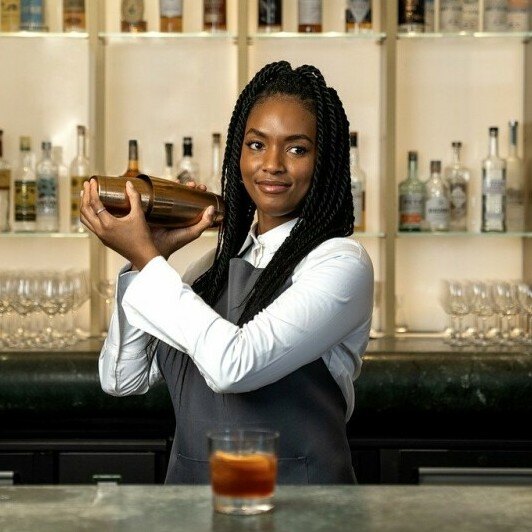
Interacting with Patrons: The Heart of Bartending
While crafting delicious drinks is a core skill, being an excellent bartender is all about creating a memorable experience for your patrons. Here’s why charisma and people skills are just as important as your cocktail shakers:
- The Art of Conversation: A skilled bartender is a master conversationalist. You should be able to strike up a friendly conversation with anyone who walks through the door, regardless of their age, background, or interests. This puts them at ease and allows them to relax and enjoy their time at the bar.
- Reading the Room: A good bartender can read the room and adapt their approach accordingly. Some patrons might want to chat about their day, while others might prefer to keep to themselves. Being able to gauge their mood and adjust your level of interaction is key.
- Active Listening: It’s more than just making small talk. Actively listen to your patrons and remember their preferences. This shows genuine interest and creates a sense of connection, encouraging them to return for another personalized experience.
- Problem Solver: Sometimes, patrons might be having a rough day or need help navigating the drink menu. Being a calm and resourceful problem solver can help diffuse tense situations and ensure everyone has a positive experience.
- The Host with the Most: A great bartender embodies the spirit of a hospitable host. You create a welcoming atmosphere, make patrons feel comfortable, and anticipate their needs.
- Memorable Moments: The best bartenders don’t just serve drinks; they create memories. A friendly conversation, a perfectly crafted cocktail, or a shared laugh can make a lasting impression on your patrons, turning them into loyal customers.
Honing Your People Skills:
- Observe & Learn: Pay attention to how other bartenders interact with patrons. Observe their body language, conversation starters, and conflict resolution techniques.
- Practice Makes Perfect: Don’t be afraid to strike up conversations with patrons (within reason, of course!). The more you practice, the more comfortable and engaging you’ll become.
- Empathy is Key: Put yourself in your patrons’ shoes and try to understand their needs and desires. A little empathy goes a long way in building rapport.
The Bottom Line:
Behind the bar, you’re not just a drink maker; you’re an entertainer, a confidante, and a host. By developing your charisma and people skills, you’ll elevate your bartending from good to exceptional, ensuring your patrons have a fantastic time and keep coming back for more. So, grab your shaker and your smile, and get ready to weave magic behind the bar!
Customer Service
Customer service is the cornerstone of a successful bartending experience. It’s about going beyond pouring drinks and creating a positive, welcoming environment for every patron who walks through the door. Here’s why customer service is key:
Setting the Stage for a Great Night:
Imagine a customer celebrating a special occasion or simply looking to unwind after a long day. Your friendly demeanor and attentiveness can set the tone for their entire evening. A genuine smile, a warm greeting, and prompt service can make all the difference in their perception of the bar and their overall experience.
Keeping Your Cool Under Pressure:
The bar can be a fast-paced environment, with multiple orders coming in at once and demanding patrons. However, maintaining a calm and collected demeanor is crucial. Active listening, clear communication, and the ability to diffuse tense situations with grace are all essential customer service skills.
Making Everyone Feel Welcome:
A skilled bartender treats every patron with respect, regardless of their background, age, or drink order. This inclusivity creates a welcoming atmosphere where everyone feels comfortable and can enjoy themselves.
The Power of Positive Interaction:
Your interaction with a customer could be a highlight of their night. A friendly conversation, a perfectly crafted drink recommendation, or simply remembering their regular order can leave a lasting positive impression. This builds loyalty and encourages them to return for another great experience.
Listening and Engaging
Listening to your customers is a superpower for bartenders. Here’s how it elevates your craft:
The Magic of Active Listening:
- Crafting the Perfect Sip: By truly listening to your customer’s preferences – their favorite flavors, spirit choices, or even how they’re feeling that day – you can recommend or create the perfect drink to match their mood and taste. This personalized approach shows you care and sets you apart from an average drink pourer.
- Building Rapport & Genuine Connections: Active listening fosters a sense of connection. When you listen attentively to their desires and even their stories (if they choose to share), you create a genuine bond that goes beyond just a business transaction. This makes the bar experience more enjoyable for them.
Finding the Balance:
- Friendly & Professional: Striking the right balance is key. Be friendly and approachable, creating a warm and welcoming atmosphere. However, maintain a professional demeanor. This means clear communication, appropriate language, and efficient service.
Think of Yourself as a Host:
Imagine yourself as the host of a fantastic party. Your job is to ensure everyone feels comfortable, has a good time, and gets what they need. You can achieve this by:
- Reading the Room: Pay attention to the overall vibe and adjust your interactions accordingly. A boisterous group might appreciate some playful banter, while a couple on a date might prefer a quieter, more intimate setting.
- Setting Boundaries: While friendliness is important, it’s crucial to maintain appropriate boundaries. If a customer becomes overly inebriated or disrupts the atmosphere, you need to address the situation professionally and calmly.
The Art of Conversation:
- Active Listening Techniques: Maintain eye contact, offer small nods to show you’re engaged, and ask clarifying questions to ensure you understand their preferences.
- Conversation Starters: Have a few conversation starters in your back pocket. “What can I get you started with tonight?” or “What’s your celebration?” can spark friendly interactions.
The Bottom Line:
By mastering the art of listening, you can craft exceptional drinks, build genuine connections, and create a fantastic atmosphere for your patrons. Remember, you’re the host behind the bar, striking the perfect balance between friendliness and professionalism to ensure everyone has a memorable and enjoyable experience. So, put on your listening ears and service smile, and get ready to impress your customers!
Handling Difficult Situations
Even the best bartenders will encounter challenging situations or intoxicated patrons. The key is to navigate these situations with tact, respect, and a focus on safety. Here are some tips for handling these moments:
De-escalation is Key:
- Calm Communication: When dealing with an upset or disruptive customer, avoid getting flustered. Maintain a calm and professional demeanor. Speak slowly and clearly, and try to understand the root of the problem.
- Active Listening: Lend them your ear. Let them vent their frustration (without interrupting), and acknowledge their feelings. This can often help diffuse the situation.
- Offer Alternatives: If a customer has clearly had too much to drink, suggest non-alcoholic beverages, food, or even calling them a cab. Focus on solutions and ensuring their safety.
Prioritize Safety:
- Know Your Limits: It’s okay to refuse service to someone who is already intoxicated. You have a responsibility to ensure a safe environment for all patrons.
- Security Backup: Don’t be afraid to seek help from security personnel if a customer becomes aggressive or belligerent. Your safety and the safety of others are paramount.
- Maintain a United Front: Establish clear communication with your colleagues. If you cut someone off, ensure other bartenders are aware of the situation.
Setting Boundaries:
- House Rules: Be familiar with your bar’s policies on intoxication and unruly behavior. Enforce them fairly and consistently.
- Body Language: Maintain good posture and eye contact. Project confidence but avoid being aggressive. A firm but polite stance can often deter unwanted advances.
Remember:
- It’s Not Personal: It’s important to separate the customer’s behavior from the person themself. Focus on resolving the situation calmly and professionally.
- Document Everything: If a situation escalates, document the details for future reference. This can be helpful if you need to involve law enforcement.
By following these tips and prioritizing the safety and comfort of all your guests, you can effectively handle even the most challenging situations behind the bar.
Building Regular Clientele
Regulars can be the backbone of a successful bar. Remembering a name or a favorite drink makes patrons feel valued and can turn a first-time visitor into a regular.
They’re the friendly faces you recognize, the people who contribute to the atmosphere, and a key factor in a bar’s success. Here’s why regulars are so valuable and how you can cultivate a loyal following:
The Power of Recognition:
- Feeling Valued: Remembering a regular’s name or their favorite drink shows you care and that they’re not just another customer. This personal touch makes them feel valued and appreciated, encouraging them to return.
- Building Relationships: Regulars become familiar faces, and you can build genuine relationships with them. This creates a sense of community and belonging within the bar.
- Word-of-Mouth Marketing: Happy regulars are your best advertisers. They’ll recommend the bar to their friends and colleagues, bringing in new customers and boosting your business.
Creating a Regular-Friendly Environment:
- Develop Your Memory: Practice memorization techniques to remember names and drink preferences. There are memory apps and tricks you can use to train your brain.
- Strike Up Conversations: Take a genuine interest in your regulars. Ask them about their day, their week, or their plans. This fosters a sense of connection.
- Go the Extra Mile: Small gestures like offering a free appetizer on their birthday or remembering a special occasion can go a long way in building loyalty.
Beyond the Usual:
- Host Events for Regulars: Organize trivia nights, themed cocktail evenings, or happy hours specifically for regulars. This strengthens the sense of community and shows appreciation for their patronage.
- Social Media Recognition: Give a shout-out to your regulars on the bar’s social media pages. This makes them feel special and can encourage others to visit.
The Bottom Line:
By remembering names, creating a welcoming atmosphere, and fostering genuine connections, you can turn first-time visitors into loyal regulars. These regulars will keep your bar thriving, creating a positive and familiar space for everyone to enjoy.
Growth and Opportunities: Advancing Your Bartending Career
You’ve dipped your toes into bartending, mastered the basics, and become comfortable engaging with patrons. Now, what’s next? Bartending is about evolving and refining your craft.
Continuous Learning
Continuous learning is essential if you aim to stay relevant and innovative. Pursue certifications that deepen your knowledge in specialties like wine, beer, or spirits. These qualifications can polish your resume and open doors to higher-paying roles.
Exploring Diverse Settings
Bartending isn’t confined to the local pub; it’s a passport to the world. Whether it’s working at a high-end resort, a bustling cruise ship, or an exotic beach bar, exploring diverse settings will enrich your professional experience.
It’s a career that offers unparalleled travel opportunities, allowing you to explore new cultures, hone your craft in exciting settings, and broaden your bartending horizons.
- Island Hopping with Mixology: Imagine creating cocktails with breathtaking ocean views! Luxury resorts in exotic locations often seek skilled bartenders to craft tropical drinks for their guests. These positions can be a fantastic way to combine your love of bartending with a taste of paradise.
- Cruising Cocktails Across the Globe: Working on a cruise ship offers the chance to visit new destinations every few days. You’ll be responsible for creating memorable drink experiences for passengers from all over the world, while exploring new ports and cultures at each stop.
- Big City Buzz with a Shaker: The fast-paced world of high-end cocktail bars in major cities is a dream for many bartenders. These establishments often cater to a discerning clientele and provide opportunities to work with premium ingredients, unique flavor profiles, and cutting-edge techniques.
- Mountain Slopes & Après-Ski Apres: Ski resorts are another exciting option. Creating warming cocktails for patrons after a day on the slopes can be a fun and rewarding experience. These positions often come with the perk of enjoying the mountain lifestyle during your off-hours.
- Beyond Borders, Beyond Cocktails: Bartending experience can be a valuable asset even beyond the traditional bar setting. Luxury train travel, private event companies, or even working as a personal bartender for high-profile clients are all possibilities. The world is your oyster (or martini glass?)!
Exploring the Options:
- Research & Networking: Investigate work visas and travel permits required for your dream destination. Networking online with bartenders who have experience working abroad can provide valuable insights and recommendations.
- Highlight Your Skills: When applying for international bartending positions, emphasize your adaptability, cultural sensitivity, and willingness to learn. Showcase your unique skills and cocktail creations to stand out from the crowd.
Embrace the Adventure:
Working as a bartender abroad is an enriching and eye-opening experience. It allows you to develop your professional skills while immersing yourself in new cultures. So, pack your shaker, dust off your passport, and get ready to embark on a global bartending adventure!
Entering Competitions
Entering competitions and becoming involved in awards can catapult your reputation. Showcase unique skills and creativity to set yourself apart from peers in the industry.
Here’s how getting involved can benefit you:
- Catapulting Your Reputation: Winning or even placing well in a prestigious competition can significantly boost your reputation within the industry. Judges are often industry experts, restaurateurs, and beverage professionals. Recognition from them can open doors to exciting job opportunities, guest bartending gigs, or even brand endorsements.
- A Platform for Creativity: Cocktail competitions often have specific themes or challenges, pushing bartenders to think outside the box and experiment with unique flavor combinations and presentation techniques. This allows you to showcase your creativity and set yourself apart from your peers.
- Networking Opportunities Galore: Competitions and awards ceremonies are excellent networking events. You’ll rub shoulders with other talented bartenders, industry veterans, and potential employers. These connections can be invaluable for your future career prospects.
- Honing Your Craft: The process of preparing for a competition itself is incredibly rewarding. You’ll delve deeper into spirit knowledge, cocktail history, and presentation techniques. This constant learning and practice will elevate your bartending skills to new levels.
- Building Confidence: Successfully navigating the pressure of a competition can do wonders for your confidence as a bartender. Knowing you can create impressive cocktails under pressure translates to a more polished performance behind the bar, impressing both colleagues and customers.
Taking the Plunge:
There are various competitions to explore, catering to different skill levels and interests. Research online or talk to fellow bartenders to discover competitions that align with your experience and style. Start with smaller local events to gain experience, then gradually work your way up to prestigious national or even international competitions.
Remember: Entering competitions is not just about winning. It’s about pushing yourself creatively, learning from the experience, and building your reputation within the vibrant bartending community. So, hone your skills, embrace the challenge, and get ready to showcase your talents on the competition stage!
Networking
Just like in mixology, where you carefully combine ingredients to create a perfect cocktail, networking is about strategically connecting with people to build mutually beneficial relationships.
The Ingredients:
- Professional Associations: Joining bartending associations allows you to connect with fellow bartenders, share knowledge, and learn from industry experts. These associations often act as the base spirit – a strong foundation for your networking endeavors.
- Industry Events: Attending cocktail competitions, trade shows, or masterclasses expands your network. These events are like the exciting liqueurs and mixers – they add flavor and vibrancy to your networking experience.
- Genuine Connections: Building sincere relationships is the key ingredient. Focus on getting to know people, share your passion for bartending, and offer genuine support. This is the high-quality liquor – the heart of your networking cocktail.
Shaking it Up:
- Active Participation: Don’t be a wallflower! Introduce yourself, participate in discussions, and ask thoughtful questions. This active engagement is like the shaking action – it blends all the ingredients together and creates a dynamic connection.
- Following Up: Just like a perfectly crafted cocktail lingers on the palate, leave a lasting impression. Follow up with new connections after events, express your appreciation, and offer to stay in touch. This follow-through is like the garnish – it adds a finishing touch and keeps the connection fresh.
The Perfect Serve:
- Opportunities Through Connections: As your network grows, valuable opportunities may arise. Previous connections might recommend you for a job opening, invite you to participate in a guest bartending event, or simply offer advice and mentorship. This is the rewarding outcome – a delicious and fulfilling professional connection.
Remember: Networking is a continuous process. Just like mastering mixology takes time and practice, building a strong network requires consistent effort and genuine connection. So, put yourself out there, build relationships, and watch as your career unfolds with the help of your ever-expanding network!
Career Pathways
The world of bartending offers more than just pouring drinks and ringing up tabs. It can be a springboard to a variety of exciting careers in the hospitality industry. Here are some potential pathways you can explore with experience and dedication:
- Bar Manager: As you hone your bartending skills and gain experience managing the bar flow, you might set your sights on becoming a bar manager. This role involves overseeing all aspects of the bar operation, from staff scheduling and inventory control to menu development and customer service.
- Beverage Director: For those passionate about the world of drinks, a career as a beverage director could be the ultimate goal. This role involves curating the bar’s drink menu, overseeing liquor and wine purchasing, and staying on top of industry trends. Beverage directors often have extensive knowledge of spirits, cocktails, and wine, and their expertise elevates the entire beverage program of a bar or restaurant.
- Owning Your Own Bar: Many bartenders dream of opening their own establishment. The path to bar ownership requires not only bartending experience but also business acumen, knowledge of licensing regulations, and a well-developed concept for your dream bar. With hard work, passion, and a solid business plan, you can turn your bartending skills into the foundation of your own thriving business.
- Beyond the Bar: Bartending skills are valuable assets in many hospitality settings. Your experience can translate to careers in restaurants, waiting staff positions, or even event management. The ability to handle pressure, work efficiently, and provide exceptional customer service are transferable skills that are highly sought after in the hospitality industry.
The Key Ingredient: Passion
No matter which path you choose, passion is the key ingredient. If you have a genuine love for drinks, creating memorable experiences for customers, and the fast-paced environment of a bar, then bartending can be the launchpad for a truly fulfilling career. The hospitality industry offers opportunities for growth, creativity, and the chance to connect with people through the magic of drinks. So, grab your jigger, shake up some delicious cocktails, and get ready to explore the exciting possibilities that bartending has to offer!
Conclusion
Bartending is more than just a job; it’s a craft teeming with growth opportunities for those who are passionate. From setting up your workspace and mastering mixology basics to interacting with patrons and advancing your career, every aspect of bartending requires dedication and skill. Raise a glass to your future endeavors and keep mixing!
Products related to this item:
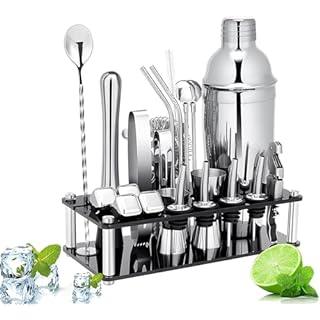 Cocktail Shaker Set Martini Shaker Set Stainless Steel Bartend… 13047% offMid-Year Sale Deal$42.46$42.46RRP:
Cocktail Shaker Set Martini Shaker Set Stainless Steel Bartend… 13047% offMid-Year Sale Deal$42.46$42.46RRP: $79.99
Disclaimer: This post contains affiliate links. If you purchase through these links, I may earn a small commission at no additional cost to you.
Read more:
Things To Know About Opening Bar In Australia: A Comprehensive Guide
Examples Of Bartending Resumes , How To Create A Resume. 18+



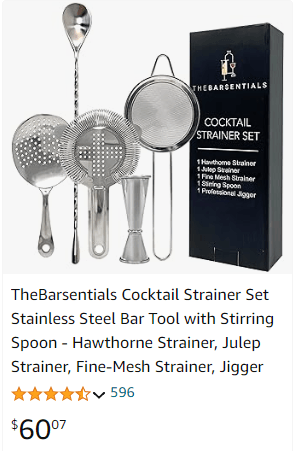

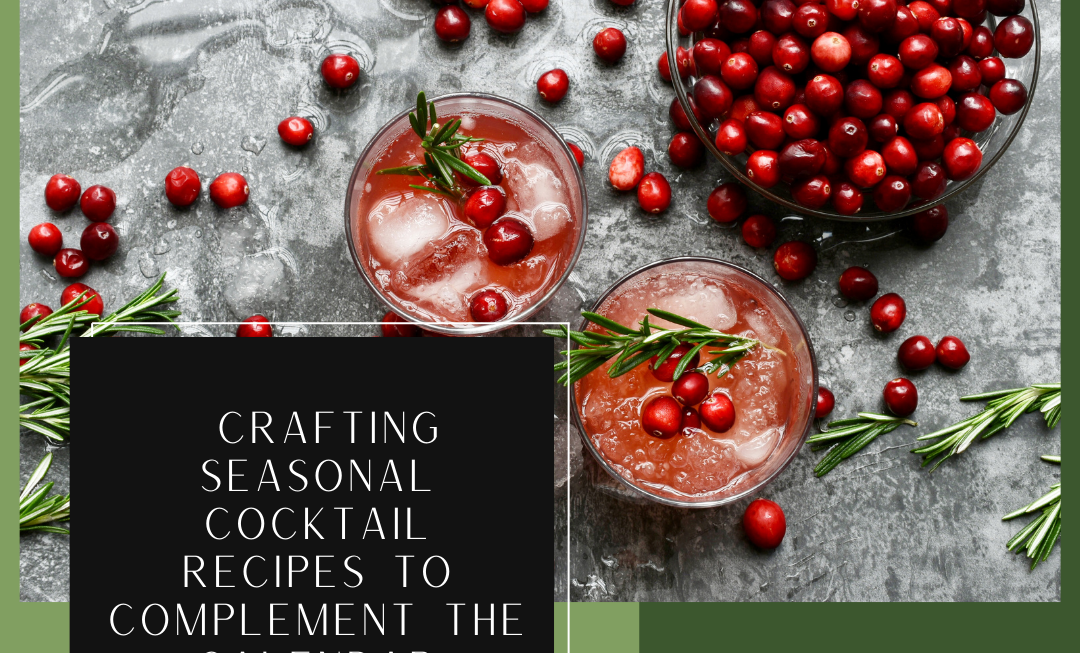
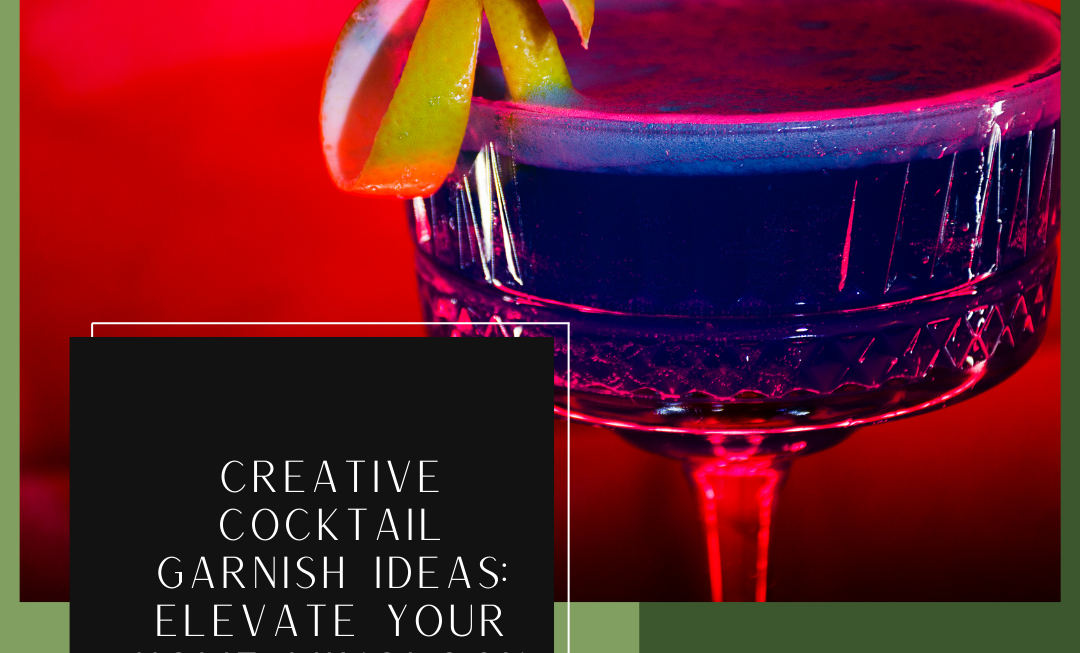

Great article, thanks!
The cocktail recipes blew me away. I saved them all, and now I’m starting to experiment. However, your text is not just recipes. It gives a complete philosophy of bartending—it’s a way of life. You opened a whole new world to me!
Once again, thank you for this enriching article. I wish you all the best in your future endeavors!
I’m thrilled to hear that!
The act of crafting a cocktail can be a meditative and artistic experience, and it’s wonderful that you’re exploring it!